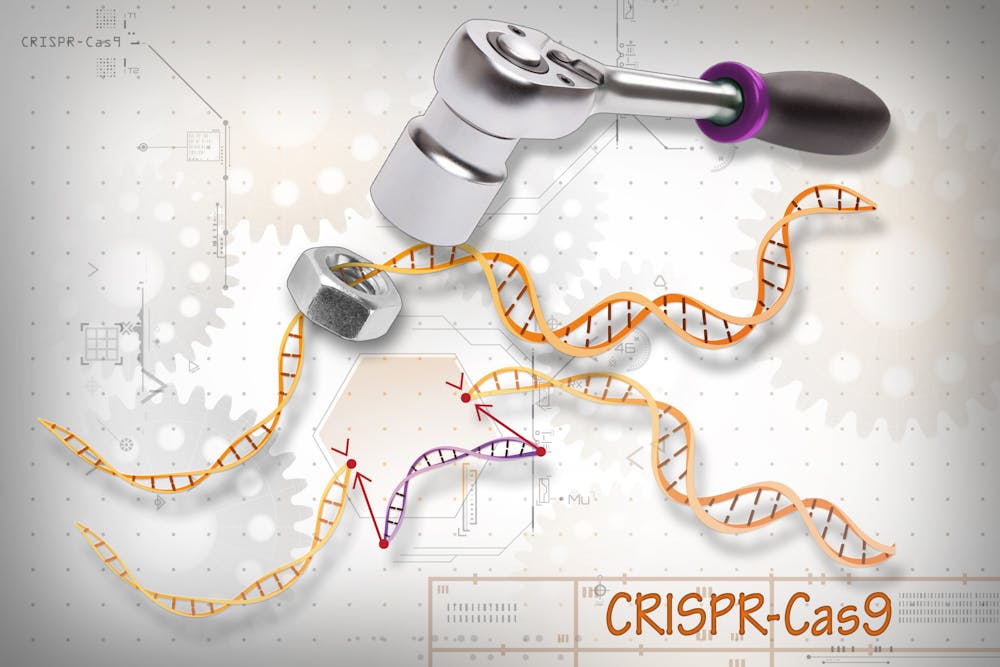Here are some of the most groundbreaking developments in science this week, ranging from a novel approach to rejuvenating brain cells using CRISPR, new insights to understand the link between the TET2 gene and cancer, the global impact of species loss and the discovery of single-electron covalent bonds in carbon atoms.
CRISPR identifies key genetic regulators in mouse brain cells by targeting SLC2A4
A team from Stanford University identified key regulators of aging in neural stem cells using CRISPR-Cas9 screens, according to a study recently published in Nature.
CRISPR is a gene-editing technology that allows scientists to make precise changes to the genome by cutting DNA at specific locations. It uses a Cas9 protein to target and edit genes, enabling researchers to disrupt or modify genetic material with high accuracy.
As mice age, neural stem cells become less active. To investigate the genetic factors behind this decline, the team used CRISPR-Cas9 to disrupt 23,000 genes systematically. Then they tested how each disruption affected neural stem cells. One gene of particular interest, SLC2A4, which codes for a protein responsible for glucose transport into cells, was found to reduce glucose intake when disrupted, promoting stem cell proliferation. This discovery supports previous studies linking sugar metabolism to aging and identifies a potential target for future therapies.
TET2 gene provides key insights into cancer development
A team of scientists, led by Chuan He from the University of Chicago and Mingjiang Xu from the University of Texas Health Science Center, has uncovered a critical role for RNA in how DNA is packaged and stored, mediated by the TET2 gene. This discovery sheds light on how mutations in TET2 contribute to cancer development.
In 2011, the team made a breakthrough by showing that, in addition to DNA and protein modifications, RNA modifications also play a key role in gene expression. Their focus then shifted to TET2, a gene whose mutations are found in 40-50% of leukemia cases and various other cancers. While researchers had long believed that TET2 mutations affected DNA directly, the lab discovered that TET2’s primary target is RNA.
This process controls chromatin organization, which determines how genes are packaged and expressed. Disruptions in RNA methylation can lead to the misregulation of gene expression, contributing to the development of cancers. This breakthrough challenges the traditional understanding of chromatin dynamics and points to RNA as a major player in gene regulation, with significant implications for cancer research.
The impact of human-caused bird extinctions is worse than expected
A new study published in Science reveals that human-driven bird extinctions over the past 130,000 years have caused a far greater loss in avian functional diversity and evolutionary history than previously understood.
Using the most comprehensive dataset to date on bird extinctions, researchers analyzed the effects of species loss on global bird diversity, focusing on traits and evolutionary lineages. They found that the extinction of approximately 600 bird species has led to the loss of around 3 billion years of unique evolutionary history and 7% of global avian functional diversity.
Birds play crucial roles in ecosystems — pollination, pest control, seed dispersal and scavenging — and the loss of these roles may have widespread ecological consequences. The researchers emphasized the urgent need for conservation efforts, particularly on islands, to preserve the remaining bird species and their ecosystem functions.
First observation of single-electron covalent bonds in Carbon atoms
For the first time, researchers have observed a single-electron covalent bond between two carbon atoms, a discovery that could redefine the traditional understanding of chemical bonding. The research, led by scientists from the University of Tokyo and Hokkaido University, was recently published in Nature.
Covalent bonds typically involve pairs of electrons shared between atoms. Single-electron bonds, however, are rare and unstable, making them challenging to observe. Although previously seen in other elements link phosphorus, they had never before been observed in carbon, which is vital to life and industrial chemistry.
To stabilize and observe this elusive bond, the research team designed a molecule with a ‘shell’ of fused carbon rings to support the carbon-carbon single-electron bond. By performing an oxidation reaction and crystallizing the resulting compound, they were able to stabilize and study this unique bond. This discovery challenges long-held assumptions about covalent bonds and opens up new possibilities for exploring the fundamental nature of chemical bonding.
These groundbreaking developments demonstrate how cutting-edge research continues to reshape our understanding of biology, chemistry and the natural world, with far-reaching implications for both science and society.





